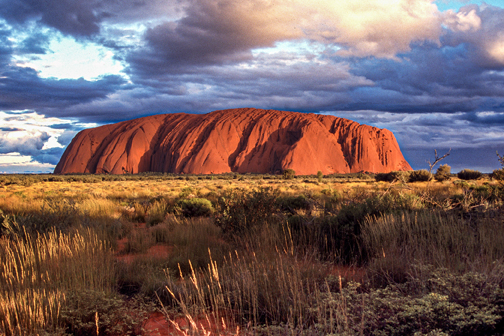
Empty eye sockets look at us plaintively
N 23°37'25.5'' E 142°05'07.9''
Day: 153 Stage three / total expedition days 544
Sunrise:
05:57
Sunset:
18:36
As the crow flies:
24,8
Daily kilometers:
30
Temperature - Day (maximum):
40° degrees, in the sun approx. 62°
Temperature - Night:
11.1° degrees
Latitude:
23°37'25.5''
Longitude:
142°05'07.9''
Island Camp – 16.10.2002
From today onwards, the acrid smell of rotting cattle accompanies us almost constantly. Their empty eye sockets look at us plaintively. It is simply terrible and indescribable how it looks here. Tired animals, stripped to the bone, sit under dry trees. Normally they flee at the sight of the caravan or approach curiously, but now they just stand there apathetically and indifferently, stare over at us and slowly trot away. Around 11:00 a.m., the thermometer rises to 40 degrees in the shade. A heatwave that is far too early for the time of year is plaguing everything that still lives here. We suffer too. Our bodies start to sweat more and more. The thirst gets bigger and bigger and if it goes on like this, 20 liters of water a day will never be enough for us. We walk side by side in silence for hours. Talking is too exhausting. We realize that there cannot be any unforeseen incidents in the next few days. We have to travel between 25 and 30 kilometers under all circumstances to get to the nearest drinking water. We never expected the last 1100 kilometers to the east coast to be so strenuous and tough. We never thought of being threatened by the forces of nature again.
The track winds its way past mesas on which, strangely enough, trees still grow. Otherwise, the landscape is bleak and dead. Suddenly we discover camel tracks. Like us, you follow the track to the east. “Unbelievable. I never thought I’d come across wild camels here,” I say in amazement. “How did they get here? I thought the stations were all fenced in?” Tanja asks. “I have no idea. They must have torn down a lot of fences to get so far from the desert into the cattle country.” “Judging by the tracks, there are two. I wonder if there are more?” “Where there are two, there are more, I’m sure of it. The camels here are probably among the few animals that survive the drought,” I say, looking at their plate-sized footprints.
After 30 kilometers we look for a place to camp for the night in the eternal barrenness. I carefully lead our boys over the steep embankment of a side arm of the Mayne River. It goes up and down, through dense, thorny undergrowth, until I discover an island between two river courses that is still overgrown with a little dry buffel grass. “This is our place,” I say with relief and scurry the brave animals down next to a few skinny and emaciated little trees.

